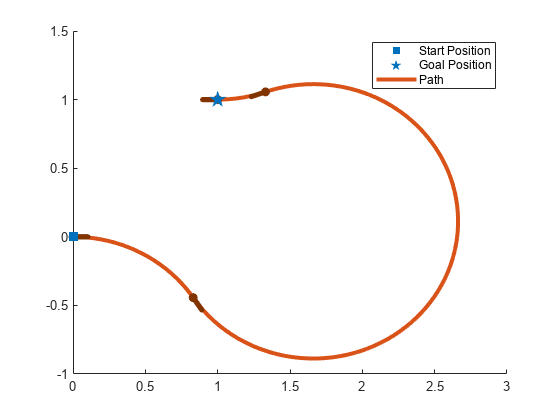connect
Connect poses for given connection type
Syntax
Description
[
connects the start and goal poses using the specified pathSegments,pathCosts] = connect(connectionObj,start,goal)dubinsConnection
object. The path segment object with the lowest cost is returned.
[
returns all possible path segments as a cell array with their associated costs.pathSegments,pathCosts] = connect(connectionObj,start,goal,'PathSegments','all')
Examples
Input Arguments
Output Arguments
Extended Capabilities
Version History
Introduced in R2019b

